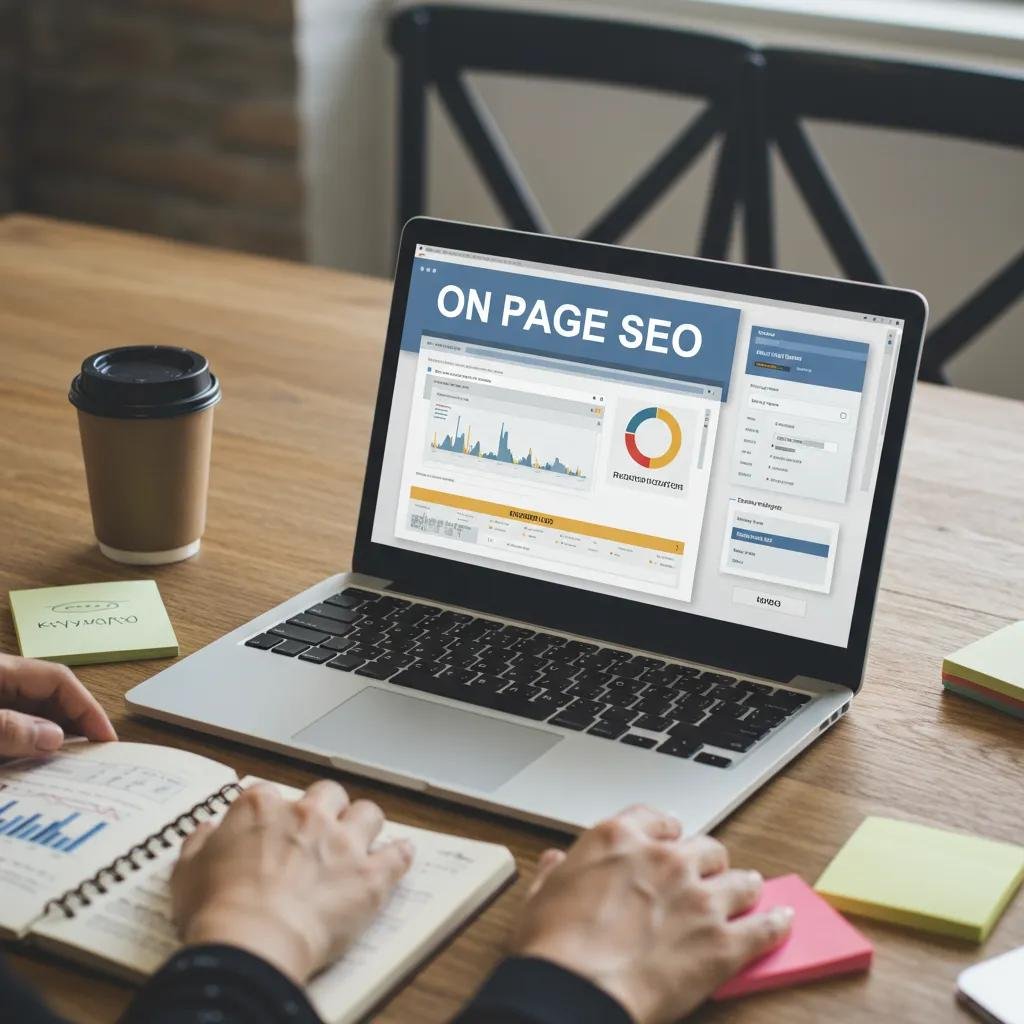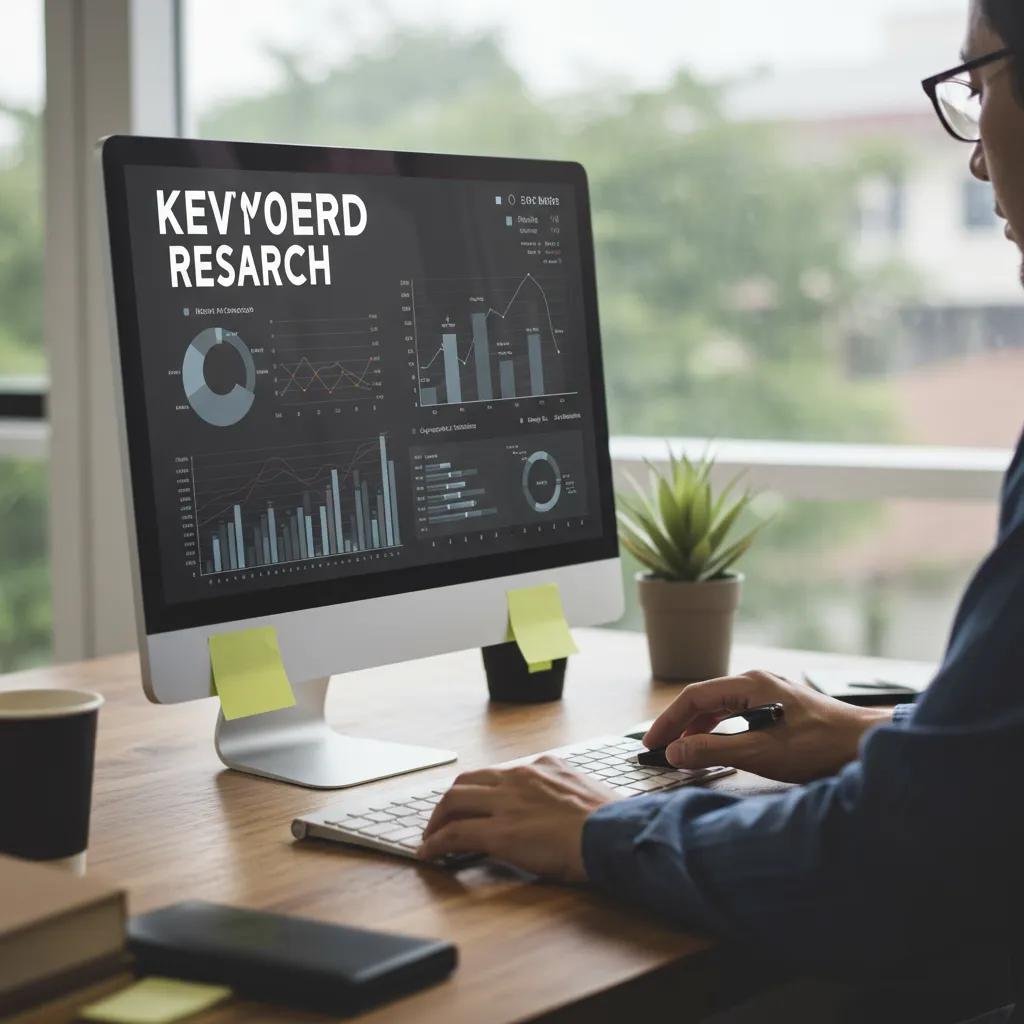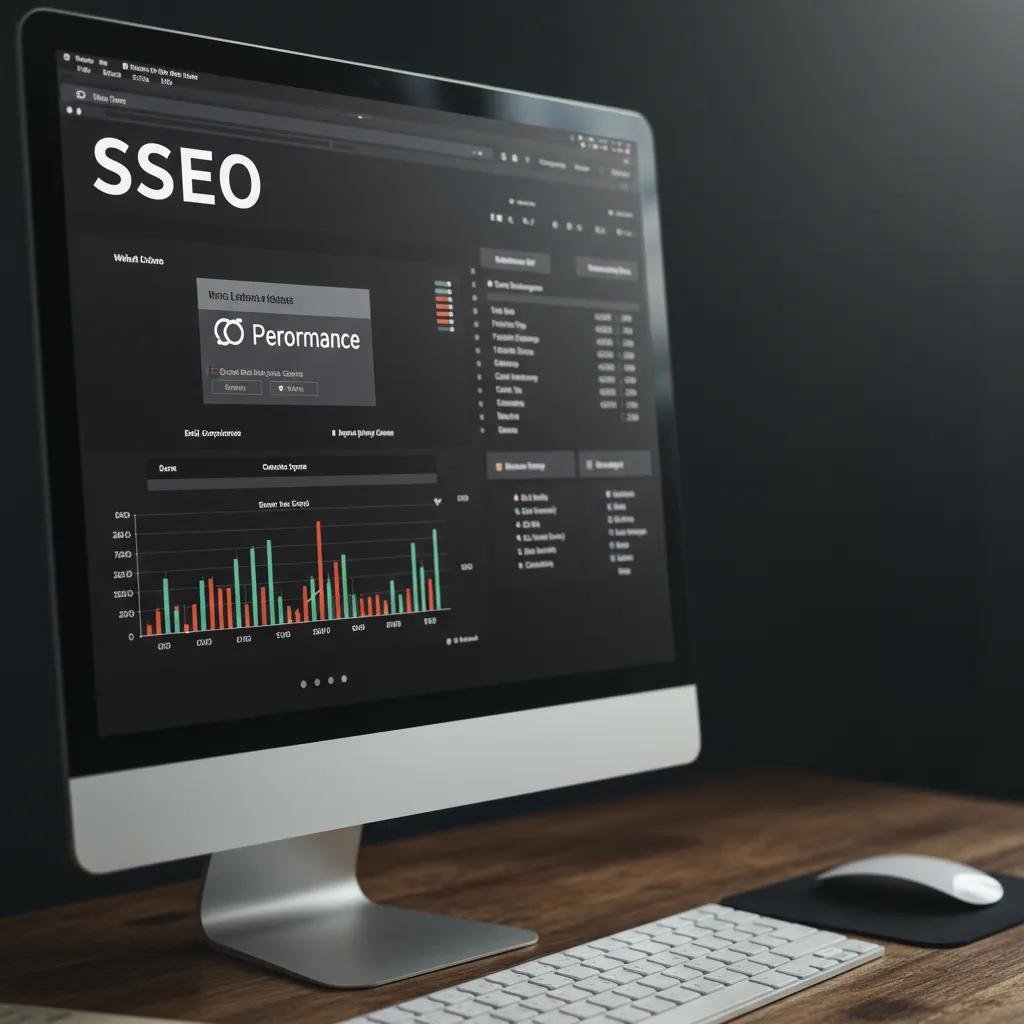
Ultimate On-Page SEO Guide: Checklist for Top Rankings
Search engines reward pages that deliver clear, relevant signals, and mastering on-page SEO is the fastest way to climb toward top rankings. In this guide, you’ll discover the exact on-page SEO guidelines that power high visibility, learn how to implement each best practice, and gain a complete checklist to optimize every element on your page. Whether you’re refining a real estate listing at sellmyhousepro.com or building any content-driven site, these strategies will boost organic traffic, enhance click-through rates, and solidify your topical authority.
We’ll cover:
- What on-page SEO encompasses and its impact on search engine rankings
- Advanced keyword research aligned with user intent
- Essential page-level ranking factors and implementation tactics
- Content quality improvements using E-E-A-T and semantic optimization
- Technical on-page factors for superior user experience
- Structured data and schema markup for rich result eligibility
- Tools and audit processes to master continuous improvement
What Is On-Page SEO and Why Does It Matter for Rankings?
On-page SEO is the practice of optimizing each webpage’s content and HTML elements to improve search visibility, directly influencing how search engines assess relevance and quality. By refining on-page factors—like title tags, header structure, and keyword usage—you deliver clear context to Google’s algorithms, which boosts organic rankings and attracts qualified visitors.
This page-level optimization forms the foundation for all other SEO efforts, ensuring that every element from your headlines to your images signals intent and relevance. For property sellers, it means crafting listing pages that showcase fast-cash offers and repair-free processing while also ranking for targeted local and transactional queries, drawing the right homeowners to sellmyhousepro.com.
How Does On-Page SEO Influence Search Engine Rankings?
On-page SEO influences rankings by aligning page signals with user queries: optimized titles, compelling meta descriptions, structured headings, and relevant content help search engines understand topic scope and user intent. When these elements contain semantic keywords and entities, Google’s Knowledge Graph better contextualizes your page, resulting in higher placements and more featured snippets.
Improved on-page signals also reduce bounce rates and increase dwell time, both behavioral metrics that reinforce your page’s authority and relevance for target keywords.
What Are the Differences Between On-Page, Off-Page, and Technical SEO?
On-page SEO focuses on content and HTML element optimization within each page. Off-page SEO covers external signals—backlinks, social shares, brand mentions—reflecting your site’s authority. Technical SEO ensures site infrastructure supports crawling and indexing, emphasizing site speed, mobile-first indexing, and Core Web Vitals. Together, these three pillars create a holistic strategy: on-page relevance, authority signals off-page, and seamless user experience via technical optimization.
How Does Search Intent Affect On-Page SEO Strategy?
Search intent determines which keywords you target and how you structure content. A transactional query like “sell house fast for cash” demands clear calls to action and pricing information, while an informational query such as “how to optimize title tags” requires step-by-step guidance. Matching on-page elements—headings, copy, structured data—to the dominant intent increases relevance scores, reduces pogo-sticking, and improves conversions for transactional audiences on sites like sellmyhousepro.com.
How to Conduct Advanced Keyword Research for On-Page SEO Success?

Advanced keyword research uncovers semantic variations, long-tail phrases, and intent signals that align exactly with user queries, enabling you to optimize pages for maximum visibility and qualified traffic. By combining search volume data with click metrics and intent analysis, you craft a keyword map that informs content structure and on-page element placement.
This approach ensures your page addresses real homeowner queries—whether about foreclosure timelines or relocation sales—while reinforcing your site’s authority for transactional search terms.
What Are Semantic Keywords and How Do They Improve SEO?
Semantic keywords are related terms and conceptually linked phrases that extend beyond primary keywords to cover topic breadth. Implementing them builds topical authority by signaling comprehensive coverage, helping search engines connect your page with multiple query variations. For example, alongside “on-page SEO guidelines,” you’d integrate “HTML element optimization,” “structured data benefits,” and “core web vitals performance” to capture diverse searches and satisfy broader semantic clusters.
How to Align Keywords with User Search Intent?
To align keywords with intent, categorize potential phrases into informational, navigational, and transactional buckets, then tailor content around each intent. Use headings and anchor text that directly answer user questions for informational queries, provide resource links for navigational intent, and integrate clear CTAs and benefit-driven copy for transactional searches. This alignment reduces bounce rates and increases conversions, guiding motivated homeowners to inquire about fast cash offers.
Which Tools Help Identify Effective On-Page SEO Keywords?
Effective keyword tools combine search volume, difficulty scores, and related-term suggestions:
- Google Keyword Planner for foundational volume and bid estimates
- Semrush for semantic keyword clustering and intent tagging
- Ahrefs for click-through rate data and long-tail suggestions
- Surfer SEO for real-time content gap analysis and keyword insights
Each tool reveals unique angles—from competitor keyword gaps to semantic co-occurrences—enabling precise on-page targeting.
What Are the Essential On-Page SEO Ranking Factors to Optimize?
Mastering on-page ranking factors requires optimizing each HTML element and content block for relevance, readability, and engagement. Below is a concise breakdown of core factors and implementation tips.
| Element | Key Attribute | Best Practice |
|---|---|---|
| Title Tag | Character count & keywords | Keep titles under 60 characters, include primary keyword near the front, and convey benefit. |
| Meta Description | Clarity & CTA | Craft 120–155 character summaries with action verbs and a clear call to action. |
| Header Tags (H1–H6) | Hierarchy & relevance | Use one H1 for topic, H2s for main sections, and H3/H4 for subpoints with semantic keywords. |
| URL Structure | Readability & keywords | Generate short, hyphenated URLs reflecting page hierarchy and containing primary keyword. |
| Image Optimization | Filename & alt text | Use descriptive filenames (e.g., on-page-seo-checklist.webp) and alt text that explains images and includes related terms. |
How to Optimize Title Tags for Maximum Click-Through Rates?
Title tags drive CTR by combining relevance with compelling language. Include the primary keyword at the beginning, limit length to 50–60 characters, and add modifiers like “Complete Guide” or “Checklist” to attract clicks. Positive predicates such as “Master,” “Boost,” and “Enhance” increase engagement and signal value.
What Are Meta Description Best Practices for Higher CTR?
Meta descriptions should summarize page content, incorporate the target keyword, and include a direct benefit statement with an action verb. For example: “Discover 10 on-page SEO guidelines to boost your rankings and attract motivated sellers.” Keeping descriptions under 155 characters prevents truncation and maintains clarity.
How to Use Header Tags (H1-H6) Strategically for SEO?
Use H1 for the main topic and H2/H3 for sectional divisions and subtopics. Incorporate semantic subheadings (e.g., “Advanced Keyword Research Techniques”) to reinforce topic coverage. This hierarchical structure improves readability and signals topical depth to search engines.
What Are URL Structure Best Practices for SEO?
Short, descriptive URLs with hyphens improve user comprehension and search relevance. Reflect content hierarchy—for example, —and avoid stop words. This practice supports better indexing and deeper semantic understanding by crawlers.
How to Optimize Images and Alt Text for Better Rankings?
Images should use modern file formats (WebP, JPEG) and descriptive, hyphen-separated filenames. Alt text must describe visual content and naturally include relevant terms, such as “Infographic showing on-page SEO ranking factors,” improving accessibility and semantic context.
How to Enhance Content Quality Using E-E-A-T and Semantic Optimization?
Content quality hinges on demonstrating experience, expertise, authoritativeness, and trustworthiness (E-E-A-T) while covering semantic entities comprehensively. High-quality content satisfies user intent, drives engagement, and signals authority to search engines.
What Is E-E-A-T and Why Is It Critical for On-Page SEO?
E-E-A-T is Google’s framework for evaluating content credibility based on firsthand experience, demonstrated expertise, recognized authority, and trust signals. Pages that showcase these attributes—through author bios, data references, and transparent methodology—enjoy higher rankings and fewer quality issues.
Google's E-E-A-T: A Framework for Content Quality and Credibility
Google’s E-E-A-T (Experience, Expertise, Authoritativeness, and Trustworthiness) framework is utilized by human quality raters to evaluate content credibility, with Trustworthiness being identified as the most crucial element. The “Experience” component was officially added in December 2022, underscoring the increasing value of first-hand knowledge and practical application in content creation.
This research directly supports the article’s explanation of E-E-A-T as a critical factor for content quality and its influence on search engine rankings.
How to Craft High-Quality, Entity-Rich Content That Satisfies User Intent?
To build entity richness, integrate related concepts—keywords, semantic triples, and structured data references—throughout your content. For example, define “on-page SEO,” explain how it improves “search visibility,” and illustrate with “Core Web Vitals enhancements.” Clear examples and real-world case studies reinforce understanding and fulfill diverse user intents.
How Does Readability and User Engagement Impact SEO?
Readability and engagement metrics—dwell time, scroll depth, bounce rate—signal content utility to search engines. Use short paragraphs, varied sentence structures, bullet lists, and relevant visuals to maintain reader interest. A smooth reading experience encourages deeper exploration of your site and supports topical authority.
What Technical On-Page SEO Factors Improve User Experience and Rankings?

Technical on-page factors ensure your optimized content is delivered swiftly and seamlessly, which directly affects user satisfaction and search engine performance metrics.
How to Improve Page Speed and Core Web Vitals for SEO?
Optimizing Core Web Vitals—Largest Contentful Paint (LCP), First Input Delay (FID), Cumulative Layout Shift (CLS)—involves:
- Compressing and lazy-loading images to accelerate LCP
- Minifying CSS and JavaScript to reduce render-blocking
- Implementing browser caching for repeat visits
Faster pages enhance user experience and are rewarded with higher rankings.
Core Web Vitals: Essential Metrics for User Experience and SEO Rankings
Core Web Vitals, which include Largest Contentful Paint (LCP), Interaction to Next Paint (INP), and Cumulative Layout Shift (CLS), are key performance metrics introduced by Google to measure real-world user experience. These metrics are confirmed as part of Google’s Page Experience ranking signals, influencing SEO rankings, bounce rates, and conversions by rewarding websites that are faster, more stable, and responsive.
This research validates the article’s emphasis on Core Web Vitals as crucial technical on-page factors that improve user experience and contribute to higher rankings.
Why Is Mobile-Friendliness Essential for On-Page SEO?
With mobile-first indexing, Google evaluates the mobile version of your site as primary. Responsive design, touch-friendly navigation, and viewport configuration ensure usability across devices, boosting search visibility and engagement metrics.
How to Implement Effective Internal and External Linking Strategies?
Robust linking fosters semantic clusters and distributes authority:
- Internal Links: Connect related content using descriptive anchor text (e.g., “semantic keyword integration”).
- External Links: Reference reputable sources to support claims and build trust signals.
Strategic linking guides users and crawlers through your topic map, reinforcing contextual relationships.
How to Use Structured Data and Schema Markup to Boost On-Page SEO?
Structured data clarifies content meaning for search engines, enabling rich snippets and enhanced SERP features that drive higher CTR.
What Is Schema Markup and How Does It Help Search Engines?
Schema markup is code that defines entities and relationships—such as , , and —so search engines can parse content contextually. Proper implementation increases the likelihood of featured snippets, knowledge panel inclusion, and richer search listings.
Schema Markup's Role in Enhancing Search Visibility and Click-Through Rates
Schema markup, a form of structured data, assists search engines in better understanding webpage content, which enables the display of rich snippets and enhanced search results. While not considered a direct ranking factor, its implementation significantly improves search visibility and can lead to higher click-through rates by making search listings more attractive and informative to users.
This research confirms the article’s assertion that structured data and schema markup are vital for boosting on-page SEO through improved SERP features and user engagement.
How to Implement Article, FAQ, and HowTo Schema for Rich Snippets?
Use JSON-LD blocks (in your site’s CMS) to define:
- Article Schema with headline, author, and datePublished
- FAQPage Schema for concise question-answer pairs
- HowTo Schema outlining step and tool properties
These markups create snippet-ready content that stands out in SERPs.
What Are Semantic Triples and How Do They Enhance Content Clarity?
Semantic triples follow the Subject–Predicate–Object model (e.g., “Title Tag contains primary keyword”), explicitly stating relationships. Integrating them in text reinforces entity connections and improves search engines’ understanding of topic structures.
What Are the Best Tools and Audits for Mastering On-Page SEO?
A systematic audit and the right suite of tools ensure continuous optimization and sustained ranking improvements.
How to Perform an On-Page SEO Audit Step-by-Step?
Perform a page-level audit by:
- Reviewing element compliance (titles, meta descriptions, headings)
- Assessing content quality for E-E-A-T and topic coverage
- Analyzing page speed and Core Web Vitals
- Checking structured data validity with Google’s Rich Results Test
- Evaluating internal/external link profiles
This process uncovers gaps and prioritizes optimization tasks.
Which SEO Tools Provide Semantic and Keyword Insights?
Top tools for semantic and keyword analysis include:
- Surfer SEO for real-time content structure recommendations
- Clearscope for related-term suggestions and content grading
- Semrush Topic Research for discovering subtopics and question clusters
These platforms guide entity coverage and ensure comprehensive on-page optimization.
How to Monitor and Update On-Page SEO for Continuous Improvement?
Set up recurring reviews using:
- Google Search Console for performance data and rich result statuses
- Ahrefs or Moz for ranking fluctuations and keyword opportunities
- Schema validators to maintain markup accuracy
Schedule quarterly audits for pillar pages and bi-annual reviews for cluster pages, updating content with fresh insights, new data, and evolving semantic entities.
Optimizing every on-page element—from titles to structured data—creates a cohesive, authoritative resource that ranks higher and converts better. By following these complete guidelines and leveraging the right tools, you’ll build pages that satisfy search intent, signal clear entity relationships, and deliver exceptional user experiences. Continuous monitoring and strategic updates ensure your content remains fresh, relevant, and positioned for top rankings now and into 2025.
